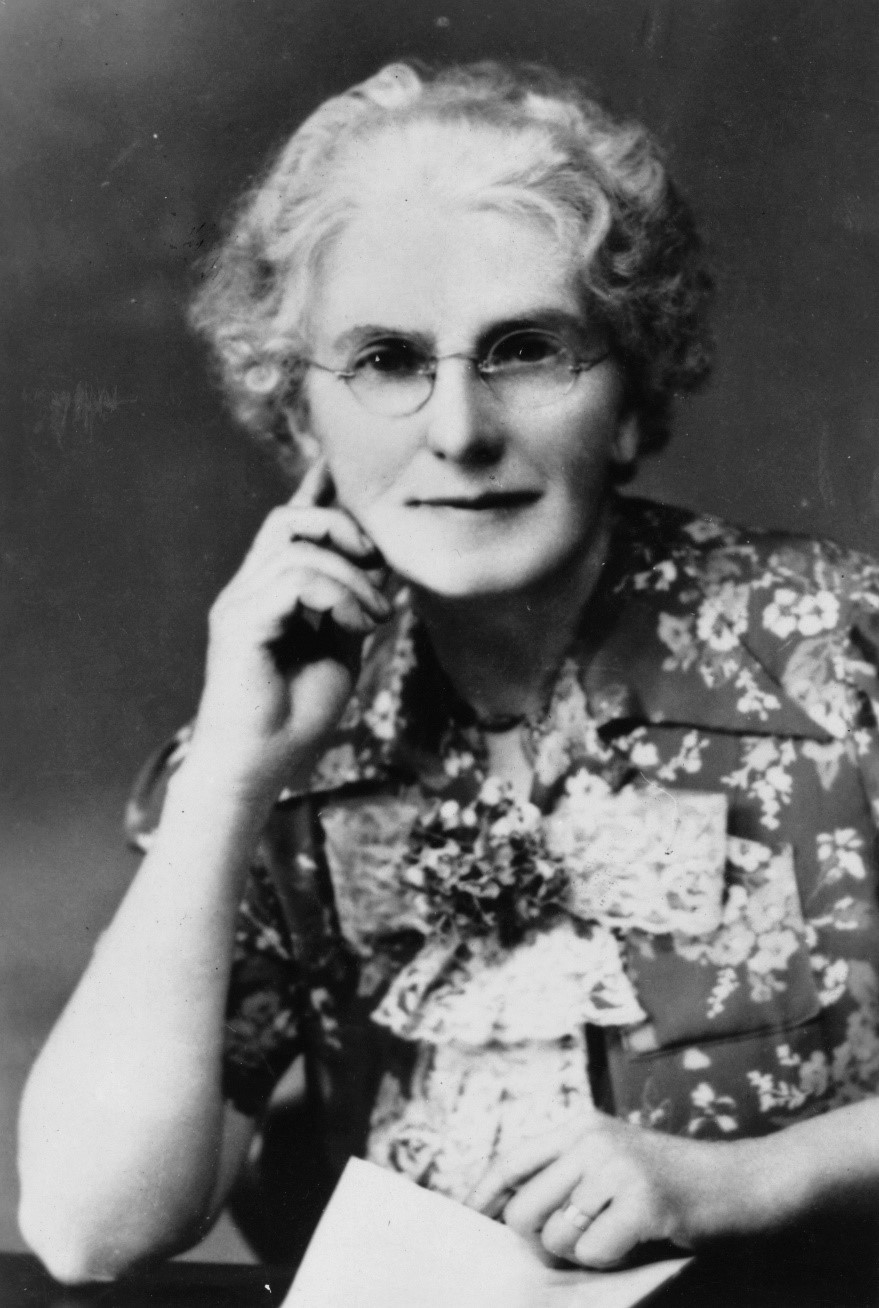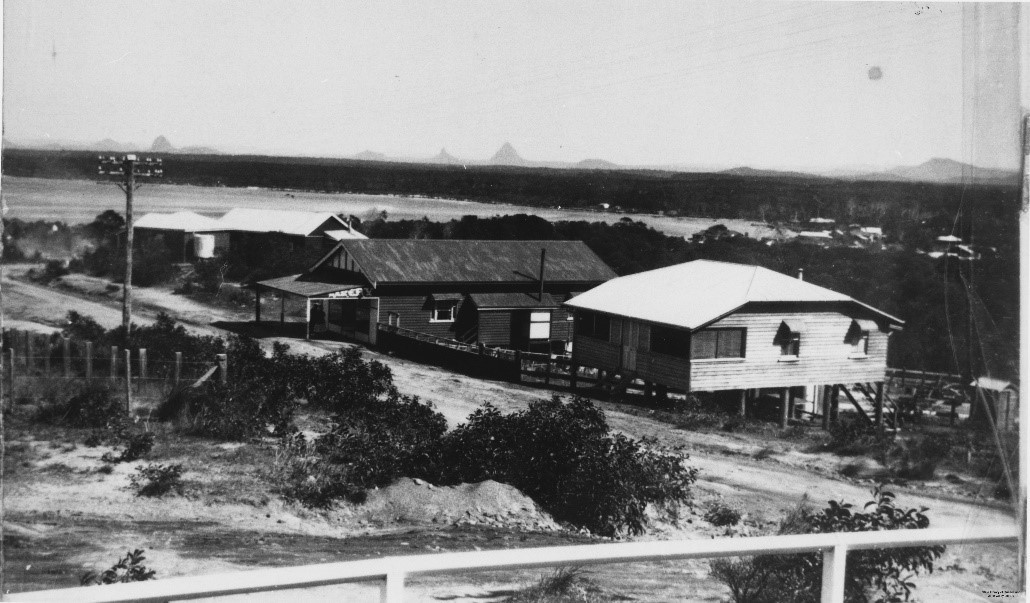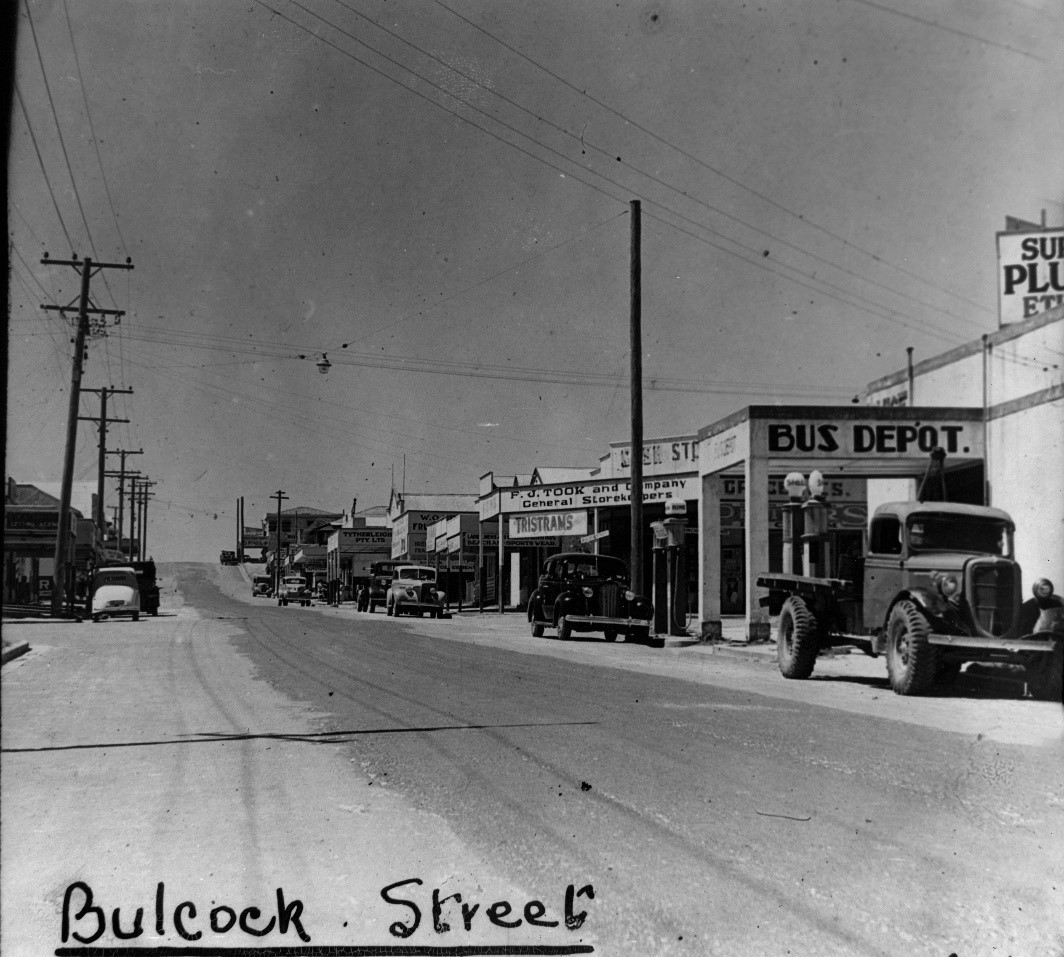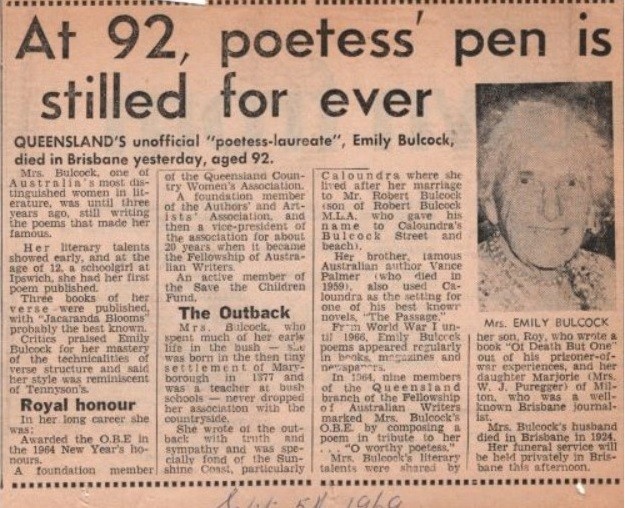Emily Hemans Bulcock: the working poet of Caloundra
By Christina Ealing-Godbold, Research Librarian, Library and Client Services | 25 March 2022
Emily Hemans Bulcock was a Queensland poet and published author whose career spanned more than seven decades.
Emily was born in 1877 at Tinana (near Maryborough), the daughter of a schoolteacher, Henry Burnett Palmer and Mary Jane, nee Carson. Although her education was principally at bush schools, her father ensured that her knowledge of literature and history was not neglected.
Emily began as a pupil teacher in her father’s classroom. By 1896, Miss Palmer was appointed the original schoolteacher at Razorback (Montville) School where she not only taught the children but also conducted night-time literacy classes for illiterate farm workers. This article in the Ipswich newspaper announced the new school built at Razorback (now Montville) and the new teacher.
After marrying an orchardist, Robert Bulcock, Emily went to live at Caloundra in 1914 and began contributing articles and poems to newspapers around Australia. Her husband’s family were early landowners in the Caloundra area and Bulcock Beach as well as Bulcock Street are named in honour of the family. Robert Bulcock died in 1924, and Emily earned her living as a freelance journalist. Although she moved to Brisbane in later years, Caloundra residents of earlier times were very proud to say that they had known Emily Bulcock who retained a holiday home at Caloundra.
Emily Palmer’s first poem was published in 1889 in the Ipswich newspaper when she was still a young girl (under the pseudonym ‘Australis’) and her last, in the Brisbane Courier Mail in 1966. Emily published in the Graziers Journal, the Farmers Gazette, The Bulletin, The Queenslander and major capital city dailies in all states, especially The Melbourne Age and the Sydney Morning Herald. Emily’s fame was spread far and wide when The Bulletin published one of her poems for Anzac Day in 1922 and it was illustrated by none other than Norman Lindsay. Emily was proud to write about Australian subjects and greatly admired the poets who championed the Australian landscape such as Dorothea McKellar.
The local newspaper in the North Coast region was The Nambour Chronicle. According to the research of Patrick Buckridge of Griffith University “The Chronicle did publish poems from time to time: Emily Bulcock's 'Caloundra' was reprinted in early 1924 in the same issue as a review of Jacaranda Blooms, the volume in which that poem had just appeared“.
Caloundra
She has wrapt around her - like dreaming maiden -
The folds of that beautiful robe - Romance!
Other fair places God has dowered,
Change with their changing circumstance,
No more through their wild woods the fairies dance;
Commerce has robed them in gown of grey,
And the fauns and dryads have vanished away.
But the vandal crowds, in their search for pleasure
With their foolish songs and their jazzing feet
Have spoiled her not, nor robbed her treasure
They have left her still to her dreaming sweet;
With her trees and her song birds in great retreat.
She has rarer songs than the crowd can sing,
in chant of waters and flutter of wing.
Caloundra, calm as the Sleeping Beauty,
Her charm is hidden from careless eyes:
Only to those who reverent worship
Where forest scents like incense rise
To dreaming fools in their folly wise -
She shows her secrets - her hidden grace -
Soft as the light on some saintly face!
Her great flower plain is sweet with blossoms
O'er billowy heather the salt wind swells
In glades where few but the fairies find their them
She has hidden her whimsical Christmas bells,
And deep to a glen where magic dwells
The maiden-hair fern shows tenderest green,
Couch where a god might rest serene.
She has dawns of wonder, and flaming sunset;
When soft strange lights on the water lie.
I have no words to paint the marvel
Of opal colours of sea and sky,
When the ocean chants to the day 'Good-bye'
'Ere back of Beerwah the last rays die,
The weird Glasshouses catch the glow,
Then dark with mantling purples grow.
If a painter stood at the gates of Heaven,
And caught the gleam of the streets of pearl,
Then, as they opened, glimpsed the vision
In the radiant eyes of some ransomed girl (?)
Watching the banners of beauty unfurl:-
He then might picture with artist hand
These rare rich colours on sea and land!
Emily Bulcock
The Fellowship of Australian Writers, formerly the Author and Artists Association of Australia has been an important advocate for Australian authors throughout the 20th century and continues today to play that role. Emily was the Vice President for many years and was a founding member of this organization.
In the one hundred years of the Country Women’s Association of Queensland, many women have contributed much to this wonderful organization that offers friendship, fellowship and help to rural women. Emily Bulcock was one of the earliest members and often spoke to QCWA groups about finding their voice through writing and literature.
Emily’s family produced a number of authors. Emily Bulcock’s brother, Edward Vivian (known as Vance) Palmer was also an Australian author of note. Vance Palmer also lived at Caloundra, in one of the fisherman’s houses at Bulcock beach between 1925 and 1929 and wrote his award -winning novel, “The Passage” based on his Caloundra experience. It was published in 1930. Emily Bulcock’s two children also both became published authors.
Deborah Jordan in her article about the Palmer and Bulcock families writes
When the Palmer family moved to Caloundra from Victoria in 1925, it was virtually unplanned.7'I was prepared for beauty,' wrote Vance, 'but not in such variety of forms.'8Caloundra was just a tiny fishing village of 15 houses with a few holiday houses high up on the headland. Emily Bulcock, Vance's sister, and her family had their holiday home, 'Grandidge', next to the lighthouse, with extraordinary vistas across the region.9The Bulcocks were responsible for some of the early subdivisions. Initially, the Palmers stayed there, and they enjoyed it so much that their two children, Aileen and Helen, attended the local primary school, which had 30 students. The Palmers then rented their own cottage down on the flat across from the Passage, stayed for five years, bought their two blocks of land and kept an ongoing connection with Caloundra for the rest of their lives. After they moved back to Melbourne, they built a small holiday home to which they returned during the southern winters.
Emily died in 1969 in Brisbane aged 92 and was known as the unofficial poet laureate of Queensland. Awarded an OBE for services to literature in 1964. Emily was honoured by nine Queensland poets who prepared work to present to her on the occasion.
Emily Hemans Bulcock was a woman of great energy and resilience. Her papers are to be found in the John Oxley library, as are several of her published works and also several photographs.
I have chosen a poem, relevant to our recent rain, written by Emily in 1945. It celebrates the wonders of a simple life and would have resonated soundly with readers at the end of the second World War.
Sabbath Rain
All day soft rain have wrapt the city round
In misty cloak with soothing in each fold,
Halted Life's pageant; softened each harsh sound,
Our world win[d]s back to simpler days of old.
The dwindling traffic goes half-muffled by,
Life's tawdry glitter fades; the home lights shine
With their old intimate luring; Peace draws nigh
To lay on chafing hearts her touch divine.
Even Youth's hot urgency is stayed awhile;
The car at rest; the racquet laid aside.
Hearth comfort, song, and gracious books beguile,
And calm creeps back to souls unsatisfied,
Till the lost charms of Home stands forth confessed?
....The quiet things, the quiet hours are the best!
Emily Bulcock (1945)
Discover more about Emily Bulcock and other fascinating Queensland women in the online collections at State Library of Queensland via OneSearch.
Christina Ealing-Godbold
Research Librarian
Library and Client Services
State Library of Queensland.
Further reading:
-Emily Bulcock. Australian Dictionary of Biography
Marjorie Puregger, 'Bulcock, Emily Hemans (1877–1969)', Australian Dictionary of Biography, National Centre of Biography, Australian National University, https://adb.anu.edu.au/biography/bulcock-emily-hemans-5420/text9191, published first in hardcopy 1979, accessed online 18 March 2022.
Archival material/manuscripts
-OM79-64/16 Emily Bulcock Poems 1924-1965
Emily Bulcock ; 1924-1965
Four holograph poems, twelve typed copies of poems and one newspaper clipping of a poem published in the Courier Mail, 15 February 1952
-OM88-07 Emily Bulcock Papers 1954-1955
1954-1955
Papers of Emily Bulcock. ...
Available:State Library South Bank Collection Request to access from level 4 (Acc OM88-07 ).
Books
Emily Bulcock ; <Brisbane : E. Bulcock ; 1945>
Available:State Library South Bank Collection Request to access from level 4 (J A821.2 BUL ).
-From Australia to Britain and other specially selected poems / by Emily Bulcock
Emily Bulcock ; Brisbane : W.R. Smith & Paterson ; 1961
Available:State Library South Bank Collection Request to access from level 4 (P A821.3 BUL ).
-Jacaranda blooms and other poems / by Emily Hemans Bulcock.
Emily. Bulcock ; Brisbane : Queensland Book Depot ; 1923]
Available:State Library South Bank Collection Request to access from level 4 (J A821.2 BUL ). See other locations
Comments
Your email address will not be published.
We welcome relevant, respectful comments.



